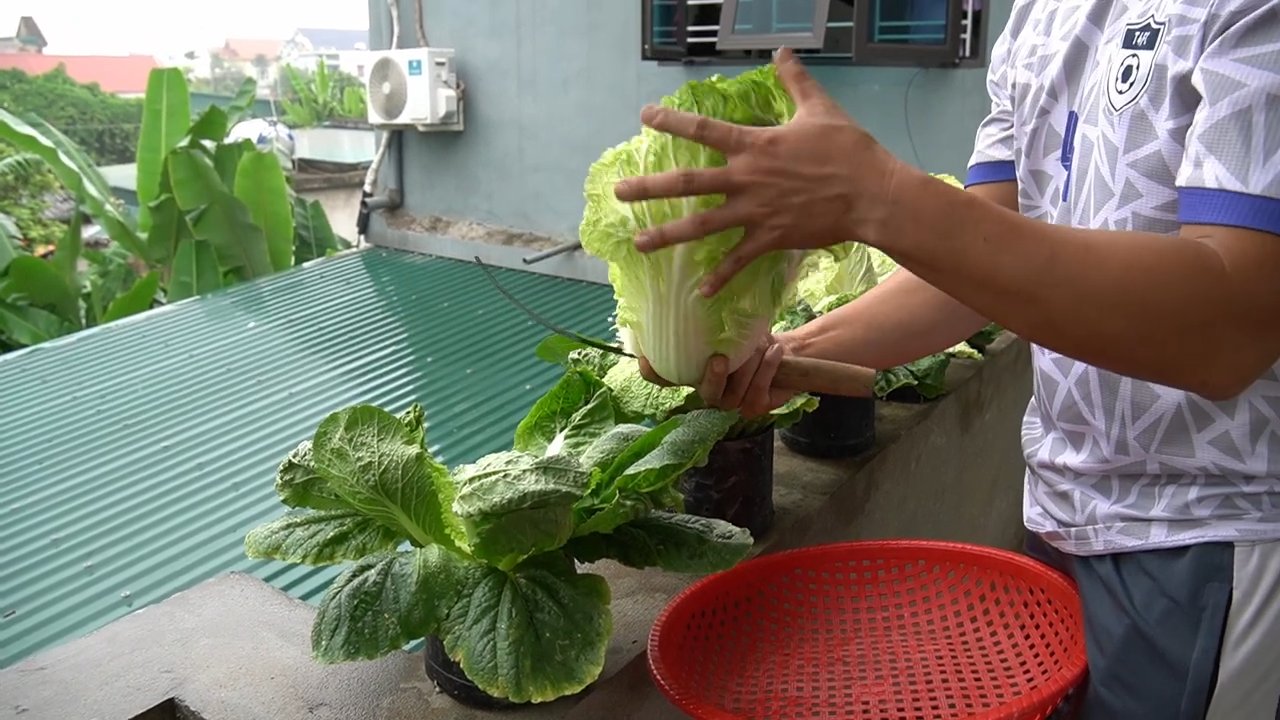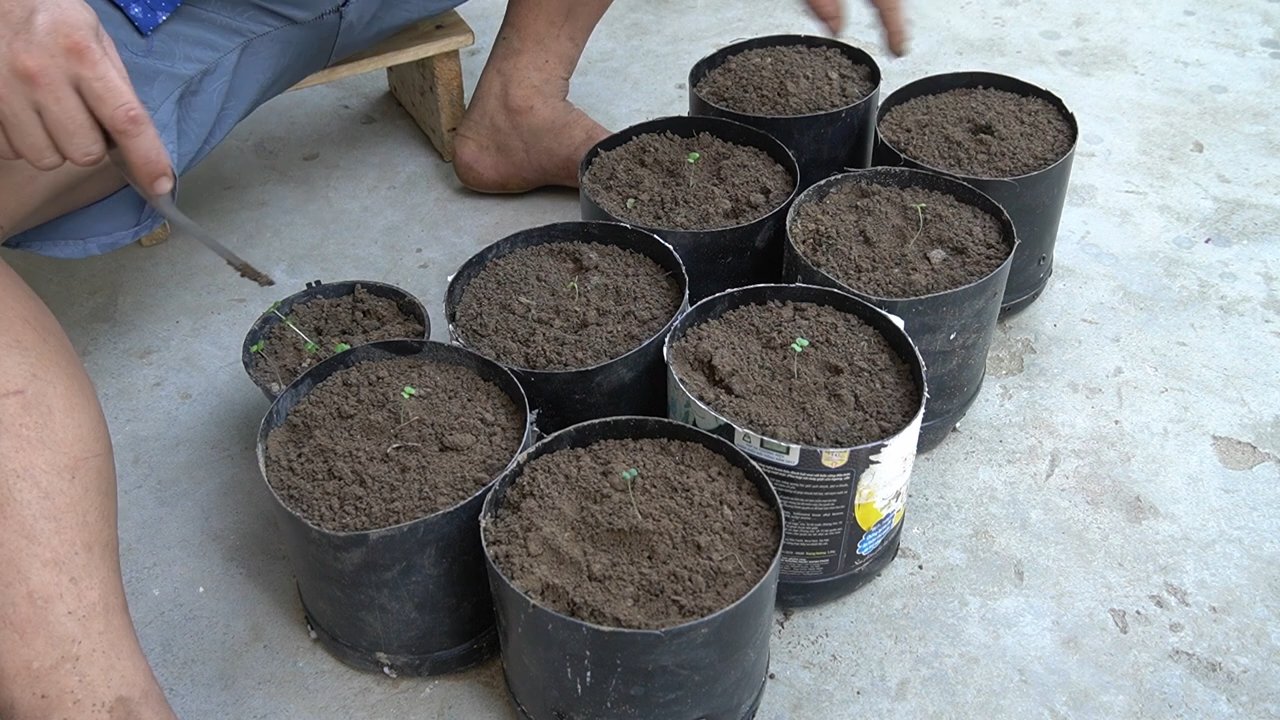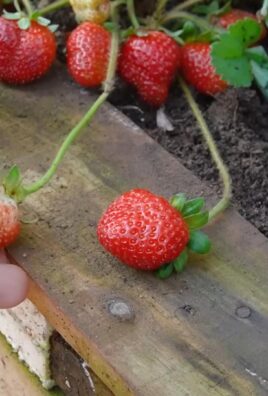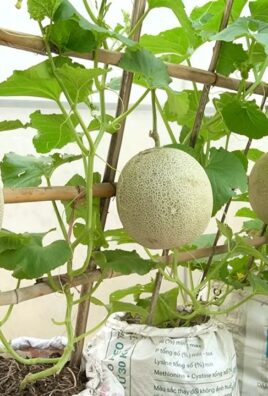Balcony lettuce garden from plastic – sounds like a mouthful, right? But trust me, it’s the secret ingredient to unlocking fresh, delicious salads right outside your door, even if you’re short on space! Forget those sad, wilted greens from the grocery store. Imagine stepping onto your balcony and snipping vibrant, crisp lettuce leaves whenever you need them. That’s the magic we’re about to create together.
Growing your own food, even something as simple as lettuce, connects us to a long and fascinating history. From ancient Roman emperors cultivating lettuce in their gardens to modern-day urban farmers, the desire to nurture and harvest our own food is deeply ingrained in us. Plus, there’s something incredibly satisfying about knowing exactly where your food comes from and that it’s free from harmful pesticides.
Why do you need this balcony lettuce garden from plastic DIY trick? Well, let’s face it, fresh produce can be expensive, and sometimes the quality just isn’t there. This project is not only budget-friendly (we’re repurposing plastic!), but it also empowers you to grow exactly the type of lettuce you love. Plus, it’s a fantastic way to add a touch of green to your balcony and enjoy the therapeutic benefits of gardening, even in a small space. So, let’s dive in and transform those plastic containers into a thriving lettuce oasis!

Creating a Thriving Balcony Lettuce Garden from Recycled Plastic Containers
Hey there, fellow gardening enthusiasts! I’m so excited to share this super easy and rewarding DIY project with you: building a beautiful and bountiful lettuce garden right on your balcony using recycled plastic containers. Not only is this a fantastic way to enjoy fresh, homegrown lettuce, but it’s also a great way to reduce waste and give those plastic containers a new lease on life. Let’s get started!
What You’ll Need
Before we dive in, let’s gather all the necessary materials. This will make the whole process smoother and more enjoyable.
* **Plastic Containers:** This is where the fun begins! You can use a variety of plastic containers, such as:
* Large yogurt tubs
* Ice cream buckets
* Storage bins (the shallow ones work best)
* Soda bottles (cut in half)
* Any other food-grade plastic container you have lying around.
Make sure to thoroughly clean all containers with soap and water before using them.
* **Potting Soil:** Choose a high-quality potting mix specifically formulated for vegetables. This will provide your lettuce with the nutrients it needs to thrive.
* **Lettuce Seeds or Seedlings:** You can start your lettuce from seeds or purchase seedlings from your local garden center. I personally love the variety of flavors and textures you get from growing different types of lettuce.
* **Drill or Screwdriver:** For creating drainage holes in the containers.
* **Landscape Fabric (Optional):** This helps prevent soil from washing out of the drainage holes.
* **Watering Can or Hose:** For watering your lettuce plants.
* **Gloves (Optional):** To keep your hands clean.
* **Measuring Tape or Ruler:** To help with spacing.
* **Scissors or Utility Knife:** For cutting landscape fabric or modifying containers.
Preparing Your Plastic Containers
This step is crucial for ensuring proper drainage and preventing waterlogging, which can harm your lettuce plants.
1. **Clean the Containers:** Wash all your plastic containers thoroughly with warm, soapy water. Rinse them well to remove any residue. This is important to ensure that no harmful chemicals leach into the soil and affect your lettuce.
2. **Drill Drainage Holes:** Using a drill or screwdriver, create drainage holes in the bottom of each container. The number of holes will depend on the size of the container. For smaller containers like yogurt tubs, 3-4 holes should suffice. For larger containers, you might need 5-6 holes. Make sure the holes are large enough to allow water to drain freely, but not so large that soil will easily wash out.
3. **Line with Landscape Fabric (Optional):** Cut pieces of landscape fabric slightly larger than the bottom of each container. Place the fabric inside the container, covering the drainage holes. This will help prevent soil from washing out while still allowing water to drain.
Planting Your Lettuce
Now for the exciting part – planting your lettuce!
1. **Fill the Containers with Potting Soil:** Fill each container with potting soil, leaving about an inch or two of space at the top. Gently pat down the soil to remove any air pockets.
2. **Sowing Seeds (if using seeds):** If you’re starting from seeds, sprinkle them evenly over the surface of the soil. Follow the instructions on the seed packet for spacing and depth. Generally, lettuce seeds should be sown about ¼ inch deep. Lightly cover the seeds with soil and gently water the surface.
3. **Transplanting Seedlings (if using seedlings):** If you’re using seedlings, gently remove them from their containers. Loosen the roots slightly with your fingers. Dig a small hole in the soil large enough to accommodate the seedling’s root ball. Place the seedling in the hole and gently backfill with soil. Water thoroughly.
4. **Spacing:** Space your lettuce plants according to the variety you’re growing. Generally, you’ll want to space them about 6-8 inches apart. This will allow them enough room to grow and prevent overcrowding.
Caring for Your Lettuce Garden
Proper care is essential for a thriving lettuce garden. Here’s what you need to do:
1. **Watering:** Water your lettuce plants regularly, especially during hot, dry weather. The soil should be consistently moist, but not waterlogged. Water deeply, allowing the water to soak into the soil. Avoid watering the leaves directly, as this can promote fungal diseases. I usually water in the morning to give the leaves time to dry before nightfall.
2. **Sunlight:** Lettuce needs at least 4-6 hours of sunlight per day. Place your containers in a sunny spot on your balcony. If your balcony doesn’t get enough sunlight, you can supplement with grow lights.
3. **Fertilizing:** Lettuce is a relatively light feeder, but it will benefit from occasional fertilization. Use a balanced liquid fertilizer diluted to half strength. Fertilize every 2-3 weeks.
4. **Pest Control:** Keep an eye out for pests such as aphids, slugs, and snails. You can control these pests with organic methods such as handpicking, insecticidal soap, or diatomaceous earth.
5. **Weeding:** Remove any weeds that pop up in your containers. Weeds can compete with your lettuce plants for nutrients and water.
6. **Harvesting:** You can start harvesting your lettuce when the leaves are about 4-6 inches long. Harvest the outer leaves first, leaving the inner leaves to continue growing. This will allow you to enjoy a continuous harvest throughout the growing season.
Choosing the Right Lettuce Varieties
There are so many delicious lettuce varieties to choose from! Here are a few of my favorites:
* **Romaine:** A classic lettuce with crisp, upright leaves. Great for salads and sandwiches.
* **Butterhead:** A soft, buttery lettuce with loose, rounded heads. Perfect for salads and wraps.
* **Loose-leaf:** A variety of lettuce with loose, individual leaves. Easy to harvest and comes in a variety of colors and textures.
* **Crisphead (Iceberg):** A crisp, dense lettuce with a mild flavor. Good for salads and sandwiches.
* **Mesclun Mix:** A mix of different lettuce varieties, often including arugula, spinach, and other greens. Adds a variety of flavors and textures to your salads.
Troubleshooting Common Problems
Even with the best care, you might encounter some problems with your lettuce garden. Here are a few common issues and how to address them:
* **Yellowing Leaves:** This can be caused by overwatering, underwatering, nutrient deficiencies, or pests. Check the soil moisture and adjust your watering accordingly. Fertilize with a balanced fertilizer. Inspect the plants for pests and treat as needed.
* **Bolting:** Bolting is when lettuce plants start to produce flowers and become bitter. This is usually caused by hot weather. To prevent bolting, plant your lettuce in a shady spot or during cooler months.
* **Slugs and Snails:** These pests can damage lettuce leaves. Handpick them off the plants or use slug and snail bait.
* **Aphids:** These tiny insects can suck the sap from lettuce leaves. Spray the plants with insecticidal soap.
* **Fungal Diseases:** These diseases can cause spots or lesions on lettuce leaves. Avoid watering the leaves directly and ensure good air circulation. Treat with a fungicide if necessary.
Extending Your Growing Season
Want to enjoy fresh lettuce for as long as possible? Here are a few tips for extending your growing season:
* **Succession Planting:** Plant new lettuce seeds or seedlings every few weeks to ensure a continuous harvest.
* **Cold Frames:** Use cold frames to protect your lettuce plants from frost and extend the growing season into the fall and winter.
* **Row Covers:** Use row covers to protect your lettuce plants from pests and extreme weather.
* **Choose Cold-Hardy Varieties:** Some lettuce varieties are more cold-hardy than others. Choose these varieties for fall and winter growing.
Enjoying Your Homegrown Lettuce
The best part of growing your own lettuce is enjoying the delicious, fresh flavor! Here are a few ideas for using your homegrown lettuce:
* **Salads:** The most obvious choice! Use your lettuce as the base for a variety of salads.
* **Sandwiches and Wraps:** Add lettuce to your sandwiches and wraps for extra flavor and crunch.
* **Lettuce Wraps:** Use large lettuce leaves as wraps for fillings such as ground meat, vegetables, or tofu.
* **Smoothies:** Add a handful of lettuce to your smoothies for a boost of nutrients.
* **Garnish:** Use lettuce as a garnish for soups, stews, and other dishes.
I hope this guide has inspired you to create your own balcony lettuce garden! It’s a fun, rewarding, and sustainable way to enjoy fresh, homegrown lettuce. Happy gardening!

Conclusion
Transforming your balcony into a thriving lettuce garden using repurposed plastic containers is more than just a clever DIY project; it’s a gateway to fresh, flavorful salads right outside your door. This method offers a sustainable, cost-effective, and incredibly rewarding way to enjoy homegrown produce, even in the smallest of urban spaces. Forget those bland, pre-packaged greens from the supermarket. With a little effort and creativity, you can cultivate a vibrant array of lettuce varieties, bursting with flavor and nutrients, all while reducing your environmental footprint.
The beauty of this DIY balcony lettuce garden lies in its adaptability. You’re not limited to just one type of lettuce. Experiment with different varieties like crisp romaine, delicate butter lettuce, peppery arugula, or vibrant red leaf lettuce. Consider planting companion herbs like basil, chives, or parsley alongside your lettuce to enhance the flavor and deter pests naturally. You can even stagger your planting schedule to ensure a continuous harvest throughout the growing season. Imagine the satisfaction of snipping fresh lettuce leaves just moments before tossing them into your salad bowl!
Beyond the delicious rewards, creating a balcony lettuce garden from plastic is an empowering experience. It connects you to the natural world, fosters a sense of accomplishment, and provides a tangible way to contribute to a more sustainable lifestyle. It’s a project that’s both educational and enjoyable, perfect for individuals, families, or anyone looking to add a touch of green to their urban dwelling.
So, what are you waiting for? Gather your repurposed plastic containers, select your favorite lettuce seeds, and embark on this exciting DIY adventure. The process is simple, the rewards are plentiful, and the impact on your taste buds and the environment is significant. We are confident that you will love your new **balcony lettuce garden**.
Don’t be afraid to get creative with your container designs and layouts. Vertical planters, hanging baskets, or tiered arrangements can maximize space and add visual appeal to your balcony. Remember to choose a sunny spot that receives at least six hours of sunlight per day, and water your lettuce regularly to keep the soil moist but not waterlogged.
We encourage you to try this DIY trick and share your experience with us. Post photos of your balcony lettuce garden on social media using #BalconyLettuceGarden and tag us so we can see your amazing creations. We’re eager to learn from your successes and challenges, and to build a community of urban gardeners who are passionate about growing their own food. Let’s transform our balconies into vibrant, edible oases, one lettuce leaf at a time!
Frequently Asked Questions (FAQ)
What types of plastic containers are best for a balcony lettuce garden?
The best plastic containers for your balcony lettuce garden are those that are food-grade and have drainage holes. Look for containers labeled with recycling symbols #2 (HDPE), #4 (LDPE), or #5 (PP), as these are generally considered safe for growing food. Avoid using containers that previously held harsh chemicals or pesticides. Milk jugs, yogurt containers, large soda bottles (cut in half), and plastic storage bins are all excellent options. Be sure to thoroughly clean and sanitize the containers before planting to remove any residue. Adding drainage holes is crucial to prevent waterlogging, which can lead to root rot. You can easily drill holes in the bottom of the containers using a drill or even a screwdriver.
How much sunlight does my balcony lettuce garden need?
Lettuce thrives in sunny locations, requiring at least six hours of direct sunlight per day. However, in hotter climates, providing some afternoon shade can prevent the leaves from wilting or becoming bitter. Observe your balcony throughout the day to determine the areas that receive the most sunlight. If your balcony is shaded for a significant portion of the day, consider using grow lights to supplement the natural light. LED grow lights are energy-efficient and can provide the necessary light spectrum for healthy lettuce growth.
What type of soil should I use for my balcony lettuce garden?
Use a high-quality potting mix specifically formulated for container gardening. Avoid using garden soil, as it can be too heavy and compacted for containers, hindering drainage and root growth. A good potting mix should be lightweight, well-draining, and rich in organic matter. You can also amend your potting mix with compost or worm castings to provide additional nutrients. Consider adding perlite or vermiculite to improve drainage and aeration.
How often should I water my balcony lettuce garden?
Lettuce needs consistent moisture to thrive, but it’s important to avoid overwatering. Water your lettuce garden when the top inch of soil feels dry to the touch. Water deeply, ensuring that the water drains out of the drainage holes. Avoid watering the leaves directly, as this can promote fungal diseases. The frequency of watering will depend on the weather conditions, the type of container you’re using, and the type of potting mix. In hot, dry weather, you may need to water daily, while in cooler, wetter weather, you may only need to water every few days.
How do I fertilize my balcony lettuce garden?
Lettuce is a relatively light feeder, but it will benefit from regular fertilization. Use a balanced liquid fertilizer diluted to half strength every two to three weeks. Alternatively, you can use a slow-release fertilizer at the time of planting. Look for fertilizers that are specifically formulated for leafy greens. Avoid over-fertilizing, as this can lead to excessive leaf growth and reduced flavor. Organic fertilizers, such as fish emulsion or seaweed extract, are also excellent options.
How do I protect my balcony lettuce garden from pests?
Several pests can attack lettuce, including aphids, slugs, snails, and caterpillars. Regularly inspect your plants for signs of infestation. Handpick any pests that you find. You can also use organic pest control methods, such as insecticidal soap, neem oil, or diatomaceous earth. Companion planting with herbs like basil, chives, or garlic can also help deter pests. Consider using netting or row covers to protect your lettuce from larger pests like birds and rabbits.
When is the best time to harvest my balcony lettuce garden?
You can begin harvesting lettuce leaves as soon as they are large enough to eat, typically when they are about 4-6 inches long. Harvest the outer leaves first, leaving the inner leaves to continue growing. This cut-and-come-again method allows you to harvest lettuce continuously throughout the growing season. Harvest lettuce in the morning, when the leaves are crisp and hydrated. Avoid harvesting lettuce during the hottest part of the day, as the leaves may be wilted.
Can I grow lettuce on my balcony year-round?
Depending on your climate, you may be able to grow lettuce on your balcony year-round. Lettuce is a cool-season crop that thrives in temperatures between 60°F and 70°F. In warmer climates, you can grow lettuce during the fall, winter, and spring. In colder climates, you can start lettuce indoors in early spring and transplant it to your balcony after the last frost. You can also use cold frames or greenhouses to extend the growing season. Choose heat-tolerant varieties for summer growing and cold-tolerant varieties for winter growing.
What are some creative ways to arrange my balcony lettuce garden?
Get creative with your balcony lettuce garden by using different types of containers, arranging them in interesting patterns, and incorporating other plants. Consider using vertical planters to maximize space and add visual interest. Hanging baskets are also a great option for growing lettuce on a balcony. You can create a tiered arrangement by stacking containers of different sizes. Add colorful flowers or herbs to your lettuce garden to attract pollinators and enhance the beauty of your balcony.
How can I make my balcony lettuce garden more sustainable?
There are several ways to make your balcony lettuce garden more sustainable. Use repurposed plastic containers instead of buying new ones. Compost your kitchen scraps and use the compost to enrich your potting mix. Collect rainwater to water your lettuce garden. Use organic pest control methods instead of synthetic pesticides. Save seeds from your lettuce plants to grow next year’s crop. By following these tips, you can create a balcony lettuce garden that is both productive and environmentally friendly.




Leave a Comment